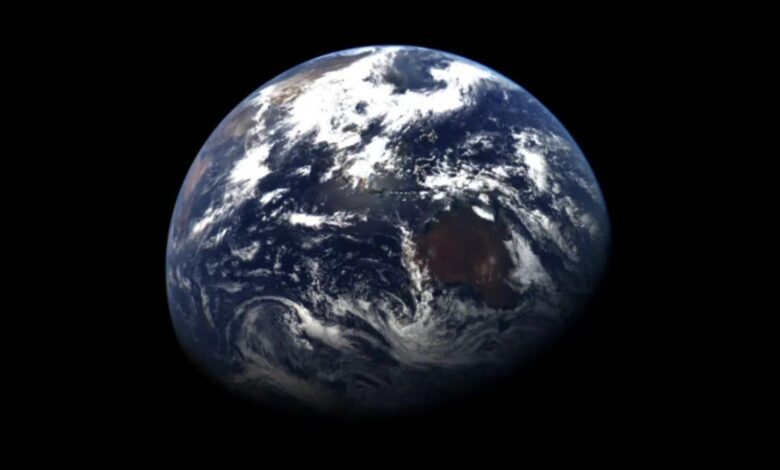Tianwen-2: Stunning Earth & Moon Views From Asteroid Probe

China’s Tianwen-2 Mission: A Journey to the Asteroid Belt
China’s Tianwen-2 probe, embarking on a mission to retrieve samples from a near-Earth asteroid, has delivered breathtaking images of Earth and the Moon. These snapshots, captured shortly after its launch, showcase the probe’s capabilities and mark a significant step in China’s deep-space exploration program. The mission aims to study asteroid Kamo’oalewa.
Capturing Earth and Moon from Deep Space
The images, taken with the spacecraft’s narrow field of view navigation sensor, offer a unique perspective of our planet and its natural satellite from approximately 590,000 kilometers away. This milestone was celebrated with a statement from the China National Space Administration (CNSA).
- Earth photo taken on May 30.
- Moon photographed a few hours later from roughly the same position.
- The probe had already traveled over 12 million kilometers.
Mission Objectives and Timeline
Launched on a Long March 3B rocket from Xichang on May 28, Tianwen-2 is now on a multi-year voyage to Kamo’oalewa, a quasi-moon of Earth. The probe will conduct detailed scientific surveys and collect samples from the asteroid’s surface. The mission’s ambitious goals include:
- Mapping the asteroid in detail.
- Collecting surface samples.
- Returning the samples to Earth in a capsule.
The expected arrival at Kamo’oalewa is in July 2026, with the sample return capsule slated to land on Earth by late 2027. This mission will provide invaluable insights into the origins of planets and the history of our solar system. Officials have assured the spacecraft is now in stable condition. The CNSA also shared an earlier picture of the probe’s circular solar array, also taken by an onboard engineering camera, showing the spacecraft from an angle that is seldom seen in flight.
The Significance of Asteroid Samples
According to Han Siyuan, a deputy director at CNSA’s Lunar Exploration and Space Engineering Centre, the undisturbed composition of the asteroid holds immense scientific value. These samples are believed to contain original information from the birth of the solar system, offering a glimpse into the conditions and materials present during that formative period.
Understanding the Early Solar System
Analyzing the asteroid’s composition will help scientists understand:
- The building blocks of planets.
- The distribution of elements in the early solar system.
- The processes that led to the formation of Earth and other planets.
China’s Expanding Deep-Space Exploration Program
Tianwen-2 represents a significant advancement in China’s deep-space exploration capabilities. Following the successful orbit of Mars achieved by Tianwen-1 in 2020, this mission further solidifies China’s position as a major player in space exploration.
Future Missions and Goals
China’s solar system program is leveraging Earth’s gravity for a slingshot effect as it targets a rendezvous with comet 311P/PANSTARRS in 2035. This mission highlights China’s commitment to pushing the boundaries of space exploration and expanding our understanding of the universe.
| Mission | Target | Goal |
|---|---|---|
| Tianwen-1 | Mars | Orbit and exploration |
| Tianwen-2 | Kamo’oalewa asteroid | Sample collection and return |
| Future mission | 311P/PANSTARRS comet | Rendezvous and scientific observation |
Kamo’oalewa: Earth’s Mysterious Quasi-Moon
Kamo’oalewa is a small asteroid that has captured the attention of astronomers due to its unique orbital characteristics. It is classified as a quasi-moon of Earth, meaning it orbits the Sun in a similar path to Earth but is not gravitationally bound to our planet in the same way as the Moon. This makes it an intriguing target for scientific investigation.
Why Kamo’oalewa?
- Its proximity to Earth makes it an accessible target for sample return missions.
- Its unique orbital characteristics may provide clues about its origin and evolution.
- Studying its composition can help us understand the diversity of asteroids in our solar system.




